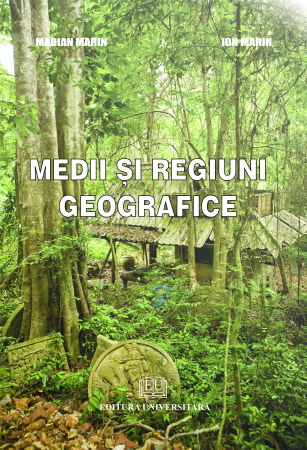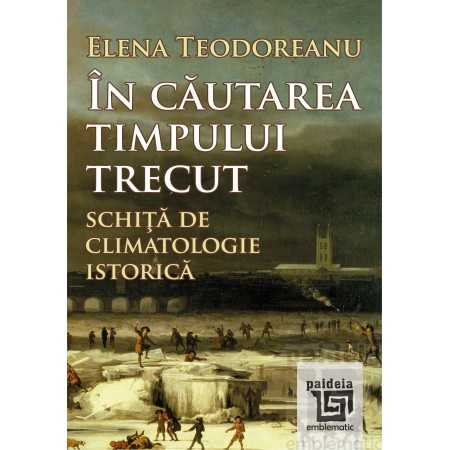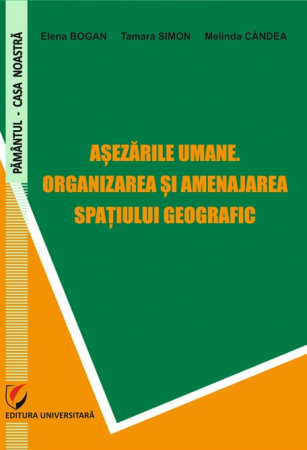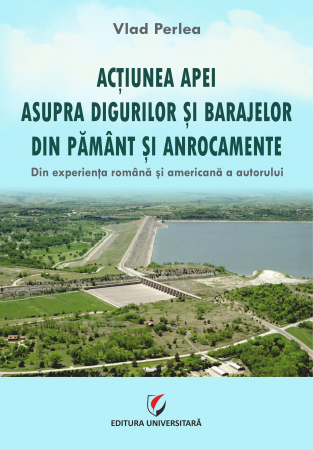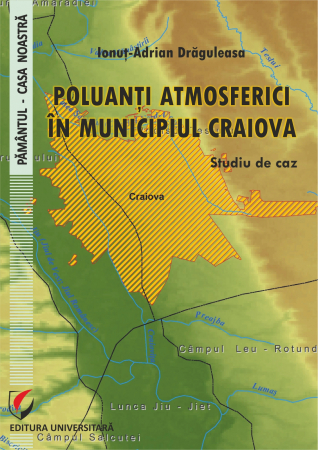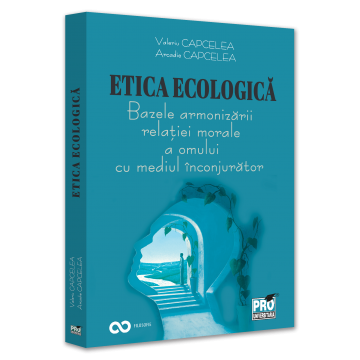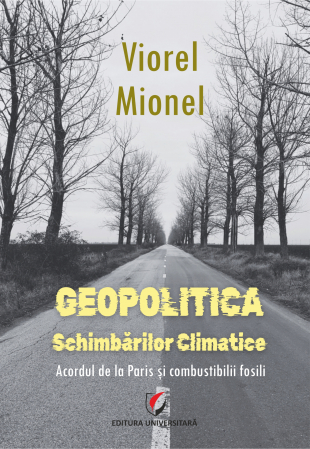Manuscript proposals: info@editurauniversitara.ro / 0745 204 115 //// Tracking orders Individuals / Sales:0745 200 718 / 0745 200 357 Orders Legal entities: 0721 722 783
Publisher: Editura Universitara
Author: Iulian Alexandru Bratu
ISBN: 978-606-28-1204-1
DOI: https://doi.org/10.5682/9786062812041
Publisher year: 2020
Edition: I
Pages: 212
Product Code:
9786062812041
Do you need help?
0745 200 718
/
0745 200 357
- Description
- Authors
- Content
- More details
- Where to find it
- Reviews (0)
This paper addresses the issue of superior use of the forest resort in terms of industrial processing of wood from poplar and birch species, considered invasive species, competing for resources with basic species, researching the possibility of processing in technical veneer. After establishing the parameters for obtaining the veneers by centric development, the work focuses on the necessary forestry measures in order to improve the quality of the wood of the studied species.
The work is intended to be an impetus, a stimulus for those who have the noble mission to take care of the forest, to shape forest ecosystems.
The attention of foresters, in the perspective of the circular bioeconomy, will be directed towards an active sustainable management of forest ecosystems. The takeover of degraded areas in the forest, the use of poplar and, especially, birch, as first afforestation species, the management of stands and the adoption of care works, will be proactive measures for sustainable forestry.
The work is intended to be an impetus, a stimulus for those who have the noble mission to take care of the forest, to shape forest ecosystems.
The attention of foresters, in the perspective of the circular bioeconomy, will be directed towards an active sustainable management of forest ecosystems. The takeover of degraded areas in the forest, the use of poplar and, especially, birch, as first afforestation species, the management of stands and the adoption of care works, will be proactive measures for sustainable forestry.
IULIAN ALEXANDRU BRATU
Preface / 9
Introduction / 11
1. Resources and procedures for obtaining technical veneers / 13
1.1. Wood resources / 13
1.2. Technical veneer technology / 34
2. Research objectives / 40
3. Characterization of the forest fund of Rasinari commune / 41
3.1. Rasinari Forest - short history / 41
3.2. Geographic location / 43
3.2.1. Neighborhoods, boundaries, borders / 44
3.2.2. Forest fund administration / 45
3.3.1. Geology and geomorphology / 45
3.3.2. Soils / 49
3.3.3. Hydrology / 50
3.3.4. Climatology / 51
3.3.5. Types of resort / 54
3.3.6. Types of forest / 58
3.3.7. Representation of forest vegetation by species / 61
3.3.8. Conclusions regarding the stationary and vegetation conditions / 62
4. Quantitative and qualitative estimation of poplar and birch wood resources / 64
4.1. Quantitative and qualitative estimation of resources / 64
4.2. The current capitalization of the poplar and birch wood resources from the Rasinari Forest District / 74
4.3. Conclusions / 76
5. Aspects regarding the capitalization of wood resources for obtaining technical veneers / 77
5.1. General technology of rolled veneers / 77
5.2. Influence of knife parameters / 79
5.3. The influence of the press bar parameters / 91
5.4. The influence of kinematic parameters and the stability of the machine - tool - wood system / 98
5.5. Conclusions / 99
6. Experimental researches regarding the capitalization of the wood resources of aspen and birch for obtaining the technical veneers / 101
6.1. Research methodology / 101
6.2. Conducting experimental research / 103
6.3. Analysis of research results / 115
6.3.1. Transverse tensile strength of veneers / 115
6.3.2. Veneer thickness / 132
6.3.3. Veneer color / 134
6.3.4. Degree of reflection of veneer surfaces / 136
6.4. Conclusions / 139
6.5. Research on the influence of defects on obtaining veneers / 140
6.5.1. Influence of shape defects on veneer yield / 141
6.5.2. Influence of structural defects / 153
6.5.3. Sorting of logs for obtaining technical veneers / 169
6.5.4. Veneer yield / 170
6.6. Solutions for reducing the negative influence of wood defects / 175
7. Establishing forestry measures to increase the quality of poplar and birch wood resources / 179
7.1. Forestry measures / 179
7.2. Installation / 179
7.2. Maintenance works / 185
7.3. Care and management / 186
7.4. Special stands for the care and management of stands / 189
7.5. Regimes and treatments / 192
7.6. Genetic aspects regarding the reduction of defects / 193
7.7. Conclusions / 198
8. Original results, conclusions and contributions / 200
Bibliography / 204
Introduction / 11
1. Resources and procedures for obtaining technical veneers / 13
1.1. Wood resources / 13
1.2. Technical veneer technology / 34
2. Research objectives / 40
3. Characterization of the forest fund of Rasinari commune / 41
3.1. Rasinari Forest - short history / 41
3.2. Geographic location / 43
3.2.1. Neighborhoods, boundaries, borders / 44
3.2.2. Forest fund administration / 45
3.3.1. Geology and geomorphology / 45
3.3.2. Soils / 49
3.3.3. Hydrology / 50
3.3.4. Climatology / 51
3.3.5. Types of resort / 54
3.3.6. Types of forest / 58
3.3.7. Representation of forest vegetation by species / 61
3.3.8. Conclusions regarding the stationary and vegetation conditions / 62
4. Quantitative and qualitative estimation of poplar and birch wood resources / 64
4.1. Quantitative and qualitative estimation of resources / 64
4.2. The current capitalization of the poplar and birch wood resources from the Rasinari Forest District / 74
4.3. Conclusions / 76
5. Aspects regarding the capitalization of wood resources for obtaining technical veneers / 77
5.1. General technology of rolled veneers / 77
5.2. Influence of knife parameters / 79
5.3. The influence of the press bar parameters / 91
5.4. The influence of kinematic parameters and the stability of the machine - tool - wood system / 98
5.5. Conclusions / 99
6. Experimental researches regarding the capitalization of the wood resources of aspen and birch for obtaining the technical veneers / 101
6.1. Research methodology / 101
6.2. Conducting experimental research / 103
6.3. Analysis of research results / 115
6.3.1. Transverse tensile strength of veneers / 115
6.3.2. Veneer thickness / 132
6.3.3. Veneer color / 134
6.3.4. Degree of reflection of veneer surfaces / 136
6.4. Conclusions / 139
6.5. Research on the influence of defects on obtaining veneers / 140
6.5.1. Influence of shape defects on veneer yield / 141
6.5.2. Influence of structural defects / 153
6.5.3. Sorting of logs for obtaining technical veneers / 169
6.5.4. Veneer yield / 170
6.6. Solutions for reducing the negative influence of wood defects / 175
7. Establishing forestry measures to increase the quality of poplar and birch wood resources / 179
7.1. Forestry measures / 179
7.2. Installation / 179
7.2. Maintenance works / 185
7.3. Care and management / 186
7.4. Special stands for the care and management of stands / 189
7.5. Regimes and treatments / 192
7.6. Genetic aspects regarding the reduction of defects / 193
7.7. Conclusions / 198
8. Original results, conclusions and contributions / 200
Bibliography / 204
Among the basic duties of foresters in relation to forest ecosystems is to meet the ecological, social and economic requirements, strictly in this order, of all stakeholders.
The experience gained in the management of the forest fund of Rasinari commune, from the position of forest fund manager at the forest district of the same name, offered me the chance to study the opportunity to capitalize on the potential of the forest resort even in less valued species, frequently neglected by foresters. Usually, forestry specialists focus on the promotion of basic species, leading the trees to those optimal, valuable structures that provide ecological stability, and in terms of industrial use of the resulting wood, their experience often stops. for products in an early stage of processing.
This paper addresses the issue of superior use of the forest resort in terms of industrial processing of wood from poplar and birch species, considered invasive species, competing for resources with basic species, researching the possibility of processing in technical veneer. After establishing the parameters for obtaining the veneers by centric development, the work focuses on the necessary forestry measures in order to improve the quality of the wood of the studied species.
The work is intended to be an impetus, a stimulus for those who have the noble mission to take care of the forest, to shape forest ecosystems.
The attention of foresters, in the perspective of the circular bioeconomy, will be directed towards an active sustainable management of forest ecosystems. The takeover of degraded areas in the forest, the use of poplar and, especially, birch, as first afforestation species, the management of stands and the adoption of care works, will be proactive measures for sustainable forestry.
Thoughts of gratitude and gratitude go to the teachers who guided my steps, guided and guided me, without forgetting those researchers who were with me. Thanks to the family for their patience and support. I thank everyone and I am grateful to them.
author
The experience gained in the management of the forest fund of Rasinari commune, from the position of forest fund manager at the forest district of the same name, offered me the chance to study the opportunity to capitalize on the potential of the forest resort even in less valued species, frequently neglected by foresters. Usually, forestry specialists focus on the promotion of basic species, leading the trees to those optimal, valuable structures that provide ecological stability, and in terms of industrial use of the resulting wood, their experience often stops. for products in an early stage of processing.
This paper addresses the issue of superior use of the forest resort in terms of industrial processing of wood from poplar and birch species, considered invasive species, competing for resources with basic species, researching the possibility of processing in technical veneer. After establishing the parameters for obtaining the veneers by centric development, the work focuses on the necessary forestry measures in order to improve the quality of the wood of the studied species.
The work is intended to be an impetus, a stimulus for those who have the noble mission to take care of the forest, to shape forest ecosystems.
The attention of foresters, in the perspective of the circular bioeconomy, will be directed towards an active sustainable management of forest ecosystems. The takeover of degraded areas in the forest, the use of poplar and, especially, birch, as first afforestation species, the management of stands and the adoption of care works, will be proactive measures for sustainable forestry.
Thoughts of gratitude and gratitude go to the teachers who guided my steps, guided and guided me, without forgetting those researchers who were with me. Thanks to the family for their patience and support. I thank everyone and I am grateful to them.
author
www.editurauniversitara.ro
If you want to express your opinion about this product you can add a review.
write a review
Customer Support Monday - Friday, between 8.00 - 16.00
0745 200 718 0745 200 357 comenzi@editurauniversitara.ro
6359.png)
![Management of Forest Ecosystems with Aspen and Birch. Opportunities for Development [1] Management of Forest Ecosystems with Aspen and Birch. Opportunities for Development [1]](https://gomagcdn.ro/domains/editurauniversitara.ro/files/product/large/management-of-forest-ecosystems-with-aspen-and-birch-opportunities-for-development-3037-4671.jpg)

